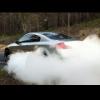Announcements
-
Similar Content
-
Latest Posts
-
By Dose Pipe Sutututu · Posted
A stand alone boost controller will not give you the control you need, unlike a modern ECU. Your boost will always naturally target the wastegate's opening pressure first, your controller then will allow you to add more boost as required. -
I recently discovered that I could not remove the outer bolt on one of my rear UCAs. Looked like it was seized to the crush tube. It wasn't all that long since I had last had that arm out (I dunno exactly, but certainly <2 yrs), so I was a bit surprised. I thought I had stock bushes in the rear knuckles, so I ordered some new PU bushes and resigned myself to having to do some dismantlery....and some butchery. It was clear that the seized bush was going to need to have the bolt cut out of it and then possibly some more brutality after that. Upon getting the 3x arms on each side disconnected from the knuckles (with the exception of the seized one, of course), I discovered that I had in fact put PU bushes into the knuckles when I did the subframe conversion about 12-13 years ago. So, I say "Oh, good, I might not have to swap any of these others out". We set to work butchering the bolt out of the seized arm. Stainless blade in a big-arse Milwaukee recipro made short work of it, and also damaged the arm, which added a welding and grinding and painting step to the whole exercise. During the butchery it became clear that the bolt was not just seized but bent. Head scratching ensued, as it is hard to understand how that bolt could get bent. I did suffer a broken (stock) toe control arm on that side a few months ago, and drove some miles with some significant rear wheel self steer and lack of control, which probably was the cause. But it's still hard to understand how it would bend that bolt, rather than just bend the arm. But here's the start of the real discoveries. The crush tube was rusty as all shit. I mean seriously rusty. A little on the inside, contributing to the tube seizing to the bolt (along with the bend). But the outside had at least 2-3mm of compressed flaky iron oxide jammed in between the parent metal and the PU bush. This one was brutalised and still took some effort to get the PU off the crush tube. So I thought I'd inspect the others more closely. The one on the tension rod adjacent the bent one was first. I had to use a 2-jaw puller to get the crush tube out, and it took some effort. It came out looking like the first one. All 6 of them were the same, except for one that looked not too bad. Had some corrosion on it, but was mostly OK. There was also a significant amount of corrosion on the inner surfaces of the knuckles. They took some convincing with pointy tools to let go their grip on the inside of the holes they were in. There was no sign of the original (SuperPro) lube anywhere. I and my bro-in-law have never seen any crush tube end up looking like this. It was seriously like the car has spent time putting boats into the water at the boat ramp. So, it seems like the PU might have been bonded to the steel on both sides, which would have to make them work more like stock rubber bushes (where arm deflection results in twist inside the rubber). Despite this, I have never had cause to believe that they were so tightly bound up. The suspension moved up and down much as you'd expect. The car never made any noises in those bushes that would have led me to believe there was a problem. Maybe the rusty interfaces actually were "sliding". Anyway, lesson learnt. Even quiet, non-troublesome PU bushes should be inspected every now and then!
-
the boost controller allows you to adjust the opening of the wastegate (which only has one preset spring) I'm going to see how it acts on it
-
I studied the principle of wastegate to begin with. so if I understood correctly. the moment when the turbo "spool" is where the boost control begins. When the target level of "psi" is reached the wastegate opens to regulate the exhaust pressure passing through the turbo and thus control its speed and the rate of boost
-
Right. I'll try my best at a concise "bring you up to speed" on stuff that may be missing here - obviously open to questions or further input from others as relevant. Here's a datalog from a responsive turbo setup with electronic boost control being used a bit, to keep it simple I've marked 3 points of interest. All of these charts are on the same time scale on the X-axis, so you can reference what engine rpm is doing in the top graph, boost and EMAP (exhaust backpressure) in the second graph, and turbo rpm in the bottom graph. A) The turbo gets it's power from exhaust gas, and pumping air takes work. As a result you can't just spin a turbo with a fixed amount of exhaust energy and expect it to keep spooling - the bigger the turbo (ie, the more air it can push) the more exhaust energy you need to drive it. The most obvious ways of getting more exhaust energy are by adding displacement, adding boost, or adding rpm - but as you add any of these the turbo also needs to do a bit more work so there is a big balance of these things needed to even get to your target boost and sometimes that's not even possible. What you can see in step "A" is that there isn't enough engine rpm or boost to reach the level we want, so this is where "lag" is. The dyno run continues and rpm increases, which gives enough energy to increase boost, which helps spool the turbine speed up even more - so you can see that the rate that the boost (and turbo speed) are starting to ramp up faster than the engine rpm is, so turbo is really starting to wake up as the graph gets closer to point B.... B) At this point we've been able to reach the boost that is actually desired at this point. To stop the boost from going further than this the wastegate will open and bypass gas past the turbine, meaning it doesn't continue accelerating at the point it was before but instead carry on at a more progressive rate which matches what the engine needs. The wastegate will have a spring in it which is rated to a specific pressure where it will start bypassing, but electronic boost control (managed by the ECU) can adjust how much pressure the spring sees in order to allow some tunability on how much boost the wastegate actually sees, and therefore how much exhaust it bypasses. The tune in this case stops boost from ramping up HARD at around 21-22psi just before 4000rpm, then as the rpm continue it allows boost to continue up to around 25psi higher in the rpm. You can see the turbo speed fairly steadily increases through the rpm to ensure it's keeping up with the increasing airflow demand due to the engine speed being higher and boost being pretty steady. If the boost dropped off after a point then you may see the turbo speed level off or even drop. C) You can see that despite the boost pressure staying pretty flat here, the exhaust pressure is steadily increasing and at this stage has overtaken boost pressure. This isn't unusual, and is largely as a result of the increasing energy needed by the turbo to pump more and more air to suit the needs of the engine as it revs out further. There are a bunch of variables in regards to how much back pressure there will be on a given turbo etc, but its one of the factors we manage when sizing and tuning a turbo setup. When exhaust back pressure starts exceeding boost pressure you will eventually start seeing signs that the turbo is running out, the engine gets less keen to make more power and it gets harder to raise boost further. In this case it's a fairly acceptable compromise for the power level (around 630kw on a 3litre engine with full boost by 4000rpm), but you'd not want to push it a lot harder than this. The maximum speed rated for the compressor wheel on this setup is around 125,000rpm so you can see its starting to get close on that side as well - I feel like this kind of illustrates some of the turbo related things we both decide on how far to push, and are also limited to how far we can push depending on the parts combination. Hope this helps more than it confuses things
-






Recommended Posts
Create an account or sign in to comment
You need to be a member in order to leave a comment
Create an account
Sign up for a new account in our community. It's easy!
Register a new accountSign in
Already have an account? Sign in here.
Sign In Now